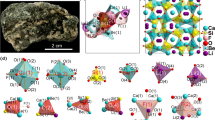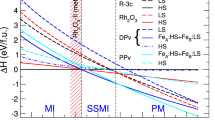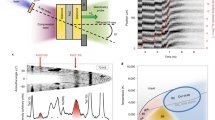Abstract
RECENT evidence1 for the presence of primordial superheavy elements 126, 124, 116 and possibly 114 in microscopic crystalline monazite inclusions in biotite micas raises several interesting questions. Earlier work2,3 suggested reasons why E124 and E126, the homologues of U and Pu, respectively, might occur in such an environment, but gives little information about E116. Better information on both E114 (eka–Pb) and E116 (eka–Po) could enable us to see why they might occur in these minerals and help suggest methods of concentration. At present, ab initio relativistic structure calculations for molecules containing superheavy elements are not feasible. We have developed techniques, however, for studying the structure of heavy atoms and ions using the multi-configuration Dirac–Fock (MCDF) relativistic self-consistent field method4; this is a considerable advance on the single configuration Dirac–Fock or Dirac–Slater techniques previously available2,3. Applications of the MCDF method to atoms and ions of Ba, Hf (Ref. 4), Bi and U, for example, have yielded good ionisation potentials and energy spectra, mainly due to the way in which relativistic effects, which increase dramatically in size with atomic number2–4, are handled. These effects make it difficult to predict some chemical properties of superheavy elements by extrapolation from the Periodic Table. We use here, therefore, the results of MCDF calculations of some properties to estimate the heat of formation of simple compounds of E114 and E116 with the simple ionic model5 and with Pauling's semi-empirical valence-bond resonance model6, to acquire insight into the chemistry of these elements.
This is a preview of subscription content, access via your institution
Access options
Subscribe to this journal
Receive 51 print issues and online access
$199.00 per year
only $3.90 per issue
Buy this article
- Purchase on Springer Link
- Instant access to full article PDF
Prices may be subject to local taxes which are calculated during checkout
Similar content being viewed by others
References
Gentry, R. V. et al. Phys. Rev. Lett. 37, 11 (1976).
Fricke, B. & Waber, J. T. Actinides Rev. 1, 433 (1971).
Keller, O. L., Burnett, J. L., Carlson, T. A. & Nestor, C. W. J. phys. Chem. 74, 1127 (1970).
Grant, I. P., Mayers, D. F. & Pyper, N. C. J. Phys. B. 9, 2777 (1976).
Ladd, M. F. C. & Lee, W. H. Prog. Solid State Chem. 1, 37 (1964).
Pauling, L. Nature of the Chemical Bond, 92 (Cornell University, 1960).
Phillips, C. S. G. & Williams, R. J. P. Inorganic Chemistry, 84 (Oxford University, 1965).
Pritchard, H. O. & Skinner, H. A. Chem. Rev. 55, 745 (1955).
Pitzer, K. S. J. chem. Phys. 63, 1032 (1975).
Bagnall, K. W. Comprehensive Inorganic Chemistry 2, 935–1008 (Pergamon, Oxford, 1973).
Johnson, D. A. Some Thermodynamic Aspect of Inorganic Chemistry, 11 (Cambridge University, 1968).
Author information
Authors and Affiliations
Rights and permissions
About this article
Cite this article
GRANT, I., PYPER, N. Theoretical chemistry of superheavy elements E116 and E114. Nature 265, 715–717 (1977). https://doi.org/10.1038/265715a0
Received:
Accepted:
Issue Date:
DOI: https://doi.org/10.1038/265715a0
This article is cited by
-
Thirty years of relativistic self-consistent field theory for molecules: relativistic and electron correlation effects for atomic and molecular systems of transactinide superheavy elements up to ekaplutonium E126 with g-atomic spinors in the ground state configuration
Theoretical Chemistry Accounts (2007)
Comments
By submitting a comment you agree to abide by our Terms and Community Guidelines. If you find something abusive or that does not comply with our terms or guidelines please flag it as inappropriate.



